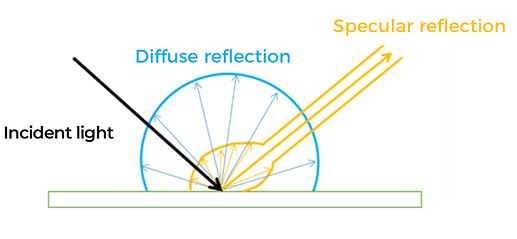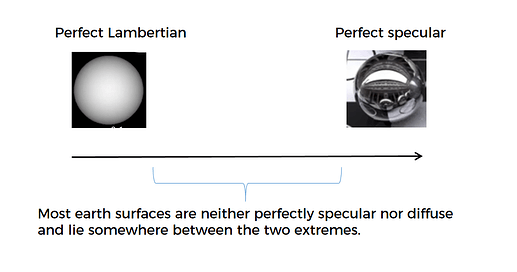For the latest information, see the documentation.
Diffuse reflection
Diffuse reflection is the reflection of light from a surface such that a ray incident on the surface is scattered at many angles. Most visible objects are seen primarily by diffuse reflection from their surfaces. This type of reflection is ideal for visual comparisons.
Diffuse reflection occurs when workpieces have rough and low-reflective surfaces, resulting in nearly equal luminance when viewed from any direction.

Examples:
Specular reflection
Weak specular reflection
- A reflected ray emerges from the reflecting surface at the same angle to the surface normal as the incident ray but on the opposing side of the surface normal, in the plane formed by the incident and reflected rays.
- Since the camera receives only a small amount of reflected light, the captured image will be dark.
Strong specular reflection
- A reflected ray emerges from the reflecting surface at the same angle to the surface normal as the incident ray but on the opposing side of the surface normal, in the plane formed by the incident and reflected rays.
- The camera receives all reflected light, so the image will be over-exposed.
Examples:

The multipath effect
This effect is also known as multipath interference or multipath distortion. Projected light shining on workpieces will reflect on them again, leading to interference that affects their stripes and results in defective point clouds.
The multipath effect is mostly seen in reflective surfaces such as bins, fridge handles, car doors, and so on:




